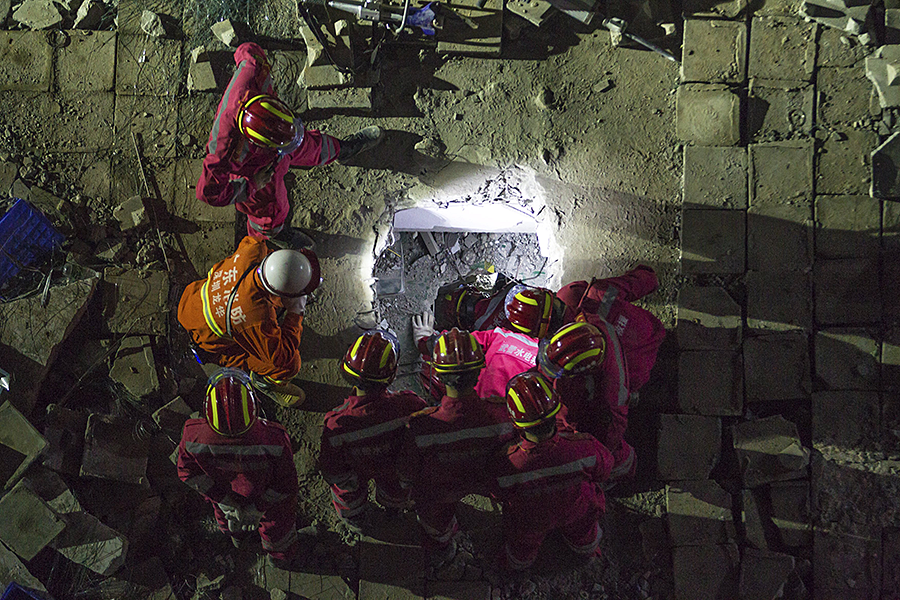Man pulled from rubble three days after Chinese landslide
Loading...
Rescuers on Wednesday pulled a Chinese man from the wreckage of a massive landslide more than 67 hours after he was buried alive outside Hong Kong.
Chinese state media said Tian Zeming was found alive amid the debris, three days after a mountain of mud and rubble barreled down on an industrial park in the city of Shenzhen.
More than 70 people are still missing, and two others have been confirmed dead, Reuters reports.
Officials said Mr. Tian was dehydrated with a badly injured leg when he was found underneath one building’s collapsed roof.
Emergency workers jammed through a hole into a small room, pulling rubble out by hand over two hours to get to Tian.
The landslide struck early Sunday morning at the Hengtaiyu Industrial Park, where a giant hill of discarded construction material and dirt was dislodged amid heavy rains, destroying 33 buildings, state media said.
Nineteen-year-old Tian was found at about 3:30 a.m. local time. The authorities told the BBC he was a migrant worker from southwestern China.
The government has launched an investigation into the incident, raiding the offices of the Shenzhen Yixianglong Investment Development, which managed the dumpsite. A company official was seen being escorted away by police, Reuters reported.
According to the BBC, the company already had been issued warnings about the mound, even as waste continued to pile up for another 10 months.
The government-run Shenzhen Daily reported last year that, with a flurry of building projects underway, including a new subway line, the city was running out of space for construction debris.
“We detected signs of life several times, but our efforts were in vain,” said a firefighter participating in the search. “As long as there are signs of life, we will try our best."
Hours after the mudslide took place, Chinese Premier Li Keqiang ordered an investigation into industrial safety standards.
The landslide was one of several manmade disasters to strike China this year. In August, 160 people were killed by a large chemical blast in the northern city of Tianjin. In January, hundreds more were injured or killed in stampede in Shanghai.
The landslide on Sunday buried homes and businesses in red mud up to 32 feet deep and thousands of feet wide.
The Chinese news agency Xinhua said heavy machinery is being used to remove thousands of tons of rubble.
Local official Zhang Yabin, said more than 5,000 workers, including police and firefighters are using dogs, drones, and machinery to search for survivors. More than 1,800 people have been evacuated from the area, he said.
"We will do everything we can and mobilize all possible forces," he said.
One local man, Wang Yongquan, who lived near the wreckage and was nearly consumed by the landslide, told state media the once-empty quarry filled up fast with dirt and construction material during the last two years.
"We never thought it could be dangerous," the man said.







